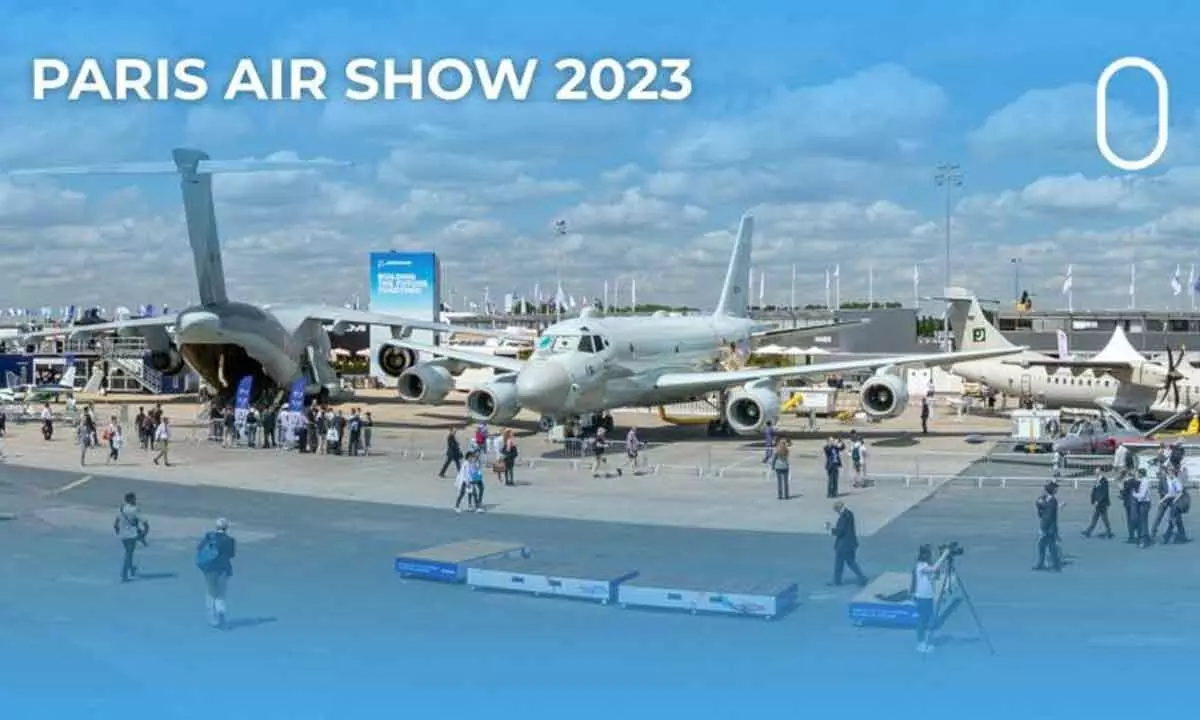How tourism boom fueling enormous demand for commercial jets globally
Air cargo will continue to outpace global trade growth, says Boeing’s outlook
image for illustrative purpose

As the longest-running jet forecast, the CMO is regarded as the most comprehensive analysis of the commercial aviation industry. Boeing will release its complete pilot and technician outlook on July 24. International tourism is well on its way to returning to pre-pandemic levels, with twice as many people travelling during the first quarter of 2023 than in the same period of 2022
With a resurgence in international traffic and domestic air travel back to pre-pandemic levels, Boeing projected global demand for 42,595 new commercial jets by 2042, valued at $8 trillion. Boeing released its 2023 Commercial Market Outlook (CMO), the company's forecast of 20-year demand for commercial airplanes and services, at the Paris Air Show. The new CMO comes three years after the pandemic grounded most of the global fleet. The key findings include: Passenger traffic continuing to outpace global economic growth of 2.6%; the global fleet nearly doubling to 48,600 jets, expanding 3.5% per year; Airlines replacing about half of the global fleet with new, more fuel-efficient models.
"The aviation industry has demonstrated resilience and adaptability after unprecedented disruption, with airlines responding to challenges, simplifying their fleets, improving efficiency and capitalizing on resurgent demand," said Brad McMullen, Boeing senior vice-president of Commercial Sales and Marketing.
"Looking to the future of air travel, our 2023 CMO reflects further evolution of passenger traffic tied to global growth of the middle class, investments in sustainability, continued growth for low-cost carriers, and air cargo demand to serve evolving supply chains and express cargo delivery," he said.
Boeing's projections for regional demand and key trends through 2042 include: Asia-Pacific markets to represent more than 40% of global demand with half of that total in China; South Asia's fleet will expand more than 7% annually, the world's fastest rate, with India accounting for more than 90% of the region's passenger traffic; North America and Europe will each account for about 20% of global demand.
Low-cost carriers will operate more than 40% of the single-aisle fleet in 2042, up from 10%. Two decades back. After omitting demand for Russia and Central Asia in last year's CMO due to uncertainty in the region, this year's forecast covers Russia and Central Asia in the Eurasia region, which comprises about 3% of the global fleet by 2042.
Commercial services forecast a total served market worth $3.8 trillion, including digital solutions that increase efficiency and reduce cost; robust demand for parts and supply chain solutions; growing maintenance and modification options; and effective training to enhance safety and support the pilot and technician pipeline.
Also in the 20-year forecast period, Boeing anticipates demand for these models: New single-aisle airplanes will account for more than 75% of all new deliveries, up slightly from the 2022 outlook, and totaling more than 32,000 airplanes; New wide-body jets will be nearly 20% of deliveries, with more than 7,400 airplanes enabling airlines to open new markets and serve existing routes more efficiently.
Air cargo will continue to outpace global trade growth, with carriers requiring 2,800 dedicated freighters. This includes more than 900 new wide bodies as well as converted narrow-body and wide-body models.
Boeing has published the CMO annually since 1961. As the longest-running jet forecast, the CMO is regarded as the most comprehensive analysis of the commercial aviation industry. Boeing will release its complete pilot and technician outlook on July 24.
International tourism is well on its way to returning to pre-pandemic levels, with twice as many people travelling during the first quarter of 2023 than in the same period of 2022.
Overall, international arrivals reached 80% of pre-pandemic levels in the first quarter of 2023. An estimated 235 million tourists travelled internationally in the first three months, more than double the same period in 2022.
Tourism has continued to show its resilience. Revised data for 2022 shows over 960 million tourists travelling internationally last year, meaning two-thirds (66%) of pre-pandemic numbers were recovered.
UNWTO Secretary-General Zurab Pololikashvili says: "The start of the year has shown again tourism's unique ability to bounce back. In many places, we are close to or even above pre-pandemic levels of arrivals. However, we must remain alert to challenges ranging from geopolitical insecurity, staffing shortages, and the potential impact of the cost-of-living crisis on tourism, and we must ensure tourism's return delivers on its responsibilities as a solution to the climate emergency and as a driver of inclusive development."
International tourism receipts grew back to hit the $one trillion mark in 2022, growing 50% in real terms compared to 2021, driven by the important rebound in international travel. International visitor spending reached 64% of pre-pandemic levels (-36% compared to 2019, measured in real terms).
By regions, Europe enjoyed the best results in 2022 with nearly $550 billion in tourism receipts (EUR 520 billion), or 87% of pre-pandemic levels. Africa recovered 75% of its pre-pandemic receipts, the Middle East 70% and the Americas 68%. Due to prolonged border shutdowns, Asian destinations earned about 28%.

